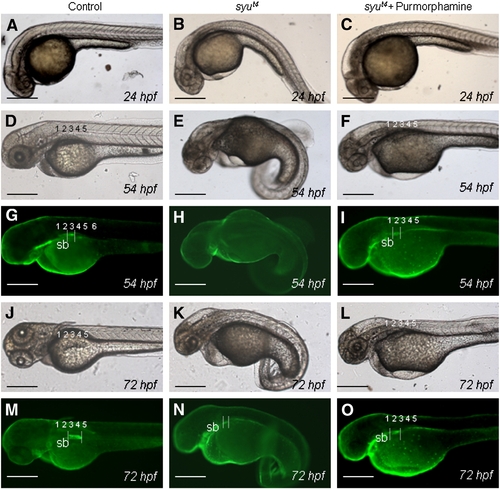Fig. S5
- ID
- ZDB-FIG-090717-30
- Publication
- Winata et al., 2009 - Development of zebrafish swimbladder: the requirement of Hedgehog signaling in specification and organization of the three tissue layers
- Other Figures
- All Figure Page
- Back to All Figure Page
|
Rescue of syut4 phenotype by purmorphamine (PA). (A–C) Phenotype of control (A,D,G), untreated homozygous syut4 (B,E,H), and PA-treated homozygous syut4 larvae (C,F,I) at 24 hpf (A–C) and 54 hpf (D–F). (G–I) show EGFP expression in Et(krt4:EGFP)sq33-2. Note the presence of an anteriorly shifted swimbladder bud in rescued larvae and absence in untreated homozygous mutants. (J–O) Phenotype at 72 hpf, note the presence of a larger swimbladder bud in rescued homozygous syut4 compared to the untreated one. Swimbladder bud in rescued larvae is also located one somite more anteriorly compared to that in control. Numbers represent somites. Sb, swimbladder. Scale bars: 250 μm. |
| Fish: | |
|---|---|
| Observed In: | |
| Stage Range: | Prim-5 to Protruding-mouth |
Reprinted from Developmental Biology, 331(2), Winata, C.L., Korzh, S., Kondrychyn, I., Zheng, W., Korzh, V., and Gong, Z., Development of zebrafish swimbladder: the requirement of Hedgehog signaling in specification and organization of the three tissue layers, 222-236, Copyright (2009) with permission from Elsevier. Full text @ Dev. Biol.

